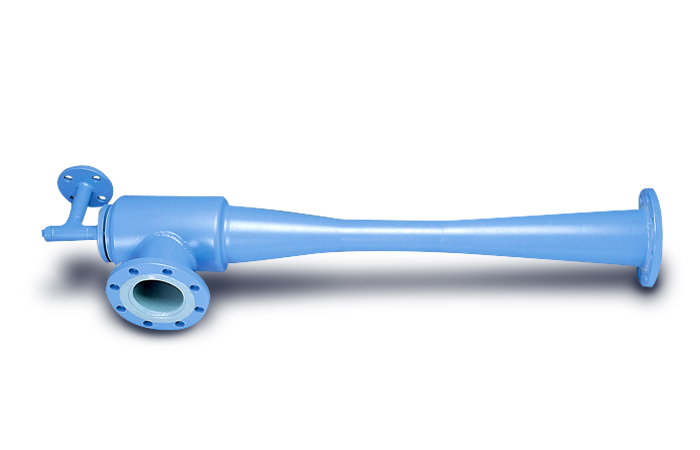



Vacuum Eductors are used in a variety of applications in the process industries, such as food and beverage, chemical/petrochemical, waste reduction, pharmaceutical, nutraceutical, power and energy, and edible oil industries. Both are venture devices, jet pumps, and work with few or no moving part. In general, when the motive fluid is a gas and the produced vacuum is used to evacuate or to vent a vessel or system, I would use the word ejector. Answer (1 of 5): An injector uses boiler steam to pump water into a boiler, an ejector uses boiler steam to pump air, water or other fluids. In fact, some dictionaries say that the two words are synonymous. Ejectors systems have a simple design, they are reliable and require low maintenance because they work without moving parts. Much like an Ejector, Eductors operate by passing motive fluid through an expanding nozzle. Hahi: Eductors and ejectors both have the same funtionality in that they both use a motive fluid to produce some vacuum. The practical application of this principle requires a simple apparatus which essentially consists of only 3 main parts: motive nozzle. In general, the term Ejector is used when the motive fluid is a gas and the produced vacuum is used to evacuate or vent a vessel/system. Eductors can be manufactured in corrosion-resistant materials for use in corrosive environments. vs-6e-s1 vre-s028sac 3s-rbt-0102-20m vs-c05. Ejectors operate by using gaseous fluids, such as steam or air as the high pressure motive fluid to create vacuums as well as to pump, compress and boost. The injector system creates a vacuum in the body of the inductor and the foam concentrate is picked up via a suction hose ND 20 with a Storz 25-D coupling. Ejectors use water as the pumping mechanism which creates a vacuum by recirculating water at a high pressure through a nozzle and. This then entrains and accelerates the gases/vapors, on the process suction side of the device, to create a vacuum.Įductors and Ejectors have the same functionality, in that they both use a motive fluid, to produce some level of vacuum. Eductor Inductor Vs L8CJWB Capacitors and inductors are two passive energy storing devices. The eductors are used to remove the air 4 times the volume of the vessel per hour for the vessel entry jobs. Water Jet Eductors consist of three basic components, namely a converging nozzle, a diffuser (or venturi), and a. The ejectors are used to maintain a system vacuum in the upstream (Example maintaining the vacuum column pressure) whereas eductor's main objective is to take out the volume of any fluid out of the system by maintaining a system pressure in the upstream. The pressure switch then disconnects the signal to the Ejector motive solenoid valve and the priming stops automatically.įurther details and technical spec, download our product catalogue.The Eductors JET-VAC ® Technologies provides operate by converting high-pressure liquid, usually water, into a high-velocity steam or can also use process liquid as the motivating fluid. Water jet ejector uses water as motive force. Then pump is started and will build up pressure in the discharge line which will activate the pressure switch. The eductors are used to remove the air 4 times the volume of the vessel per hour for the vessel entry jobs. They are sometimes called aspirators, Venturi pumps, or jet pump. Another general-purpose mixing type is the proportioning eductor. 3, can entrain approximately 3 gallons of fluid for each gallon of motive fluid. A very simple form of mixing eductor, Fig. With a pre-determined time delay, the pump casing gets flooded upto discharge level, which is indicated through liquid discharge at Primetech Ejector. Eductors are used to lift, pump, mix, and agitate liquids, granular solids, and slurries. Mixing eductors,designed for mixing and blending, usually have pressure connections outside the tank containing the fluid to be agitated. Thereby drawing liquid from the source well into pump casing. The process of ensuring liquid presence in the suction line and pump casing is known as Priming.Ĭompressed air will flow through the ejector and create a vacuum in the pump casing and suction line Hence the liquid needs to be drawn upto the pump chamber top level to ensure pumping start-up. This height difference is known as Suction lift. This creates a problem when there's a positive height difference between the Pump Suction level and Sump liquid level. The pump chamber of a centrifugal pump needs to run full of liquid for the pump to start with the pumping. Manufacturer of Water Jet Ejector - Water Steam Jet Ejector, Water Ejector System, Static Mixer System and Tank Eductor System offered by Shivam Process. by means of a non-return valve/closed discharge valve. In order to make the unit work, the delivery pipe has to be shut off, e.g. The PRIMETECH priming ejector is designed for mounting on non self- priming centrifugal pumps thus making the pump unit self-priming. Ejectors and Thermocompressors, like the Liquid Jet Gas Eductors can be used to create vacuums, however Ejectors and Thermocompressors having a gaseous motive.


 0 kommentar(er)
0 kommentar(er)
